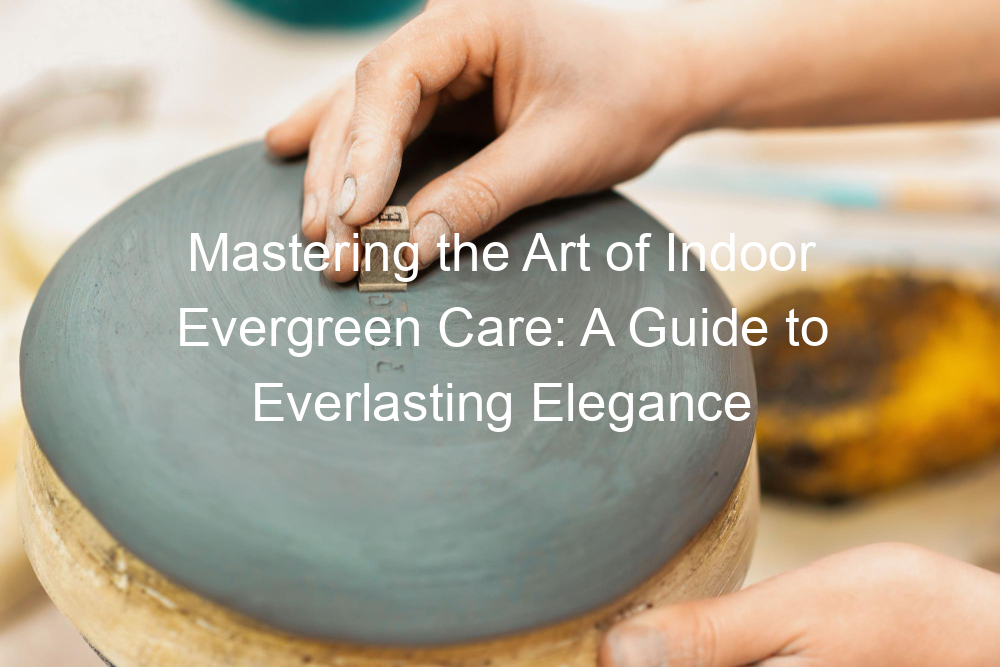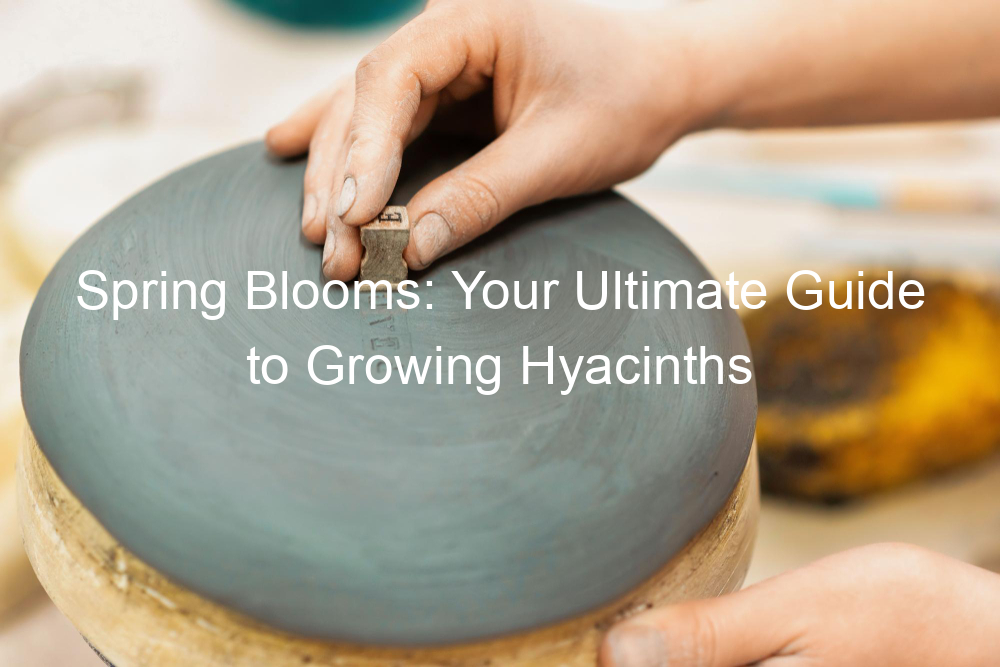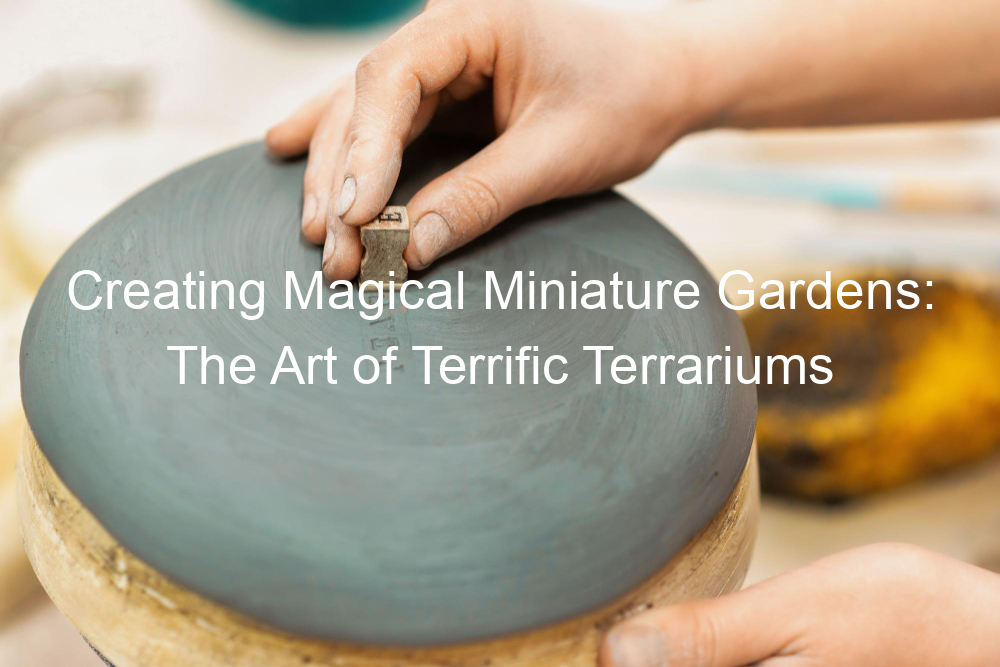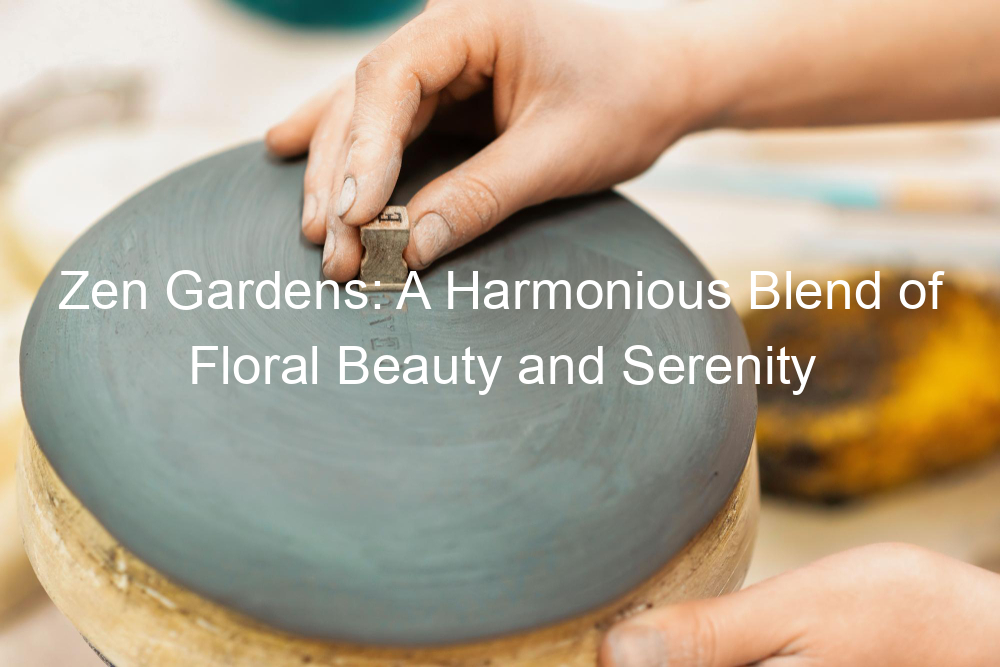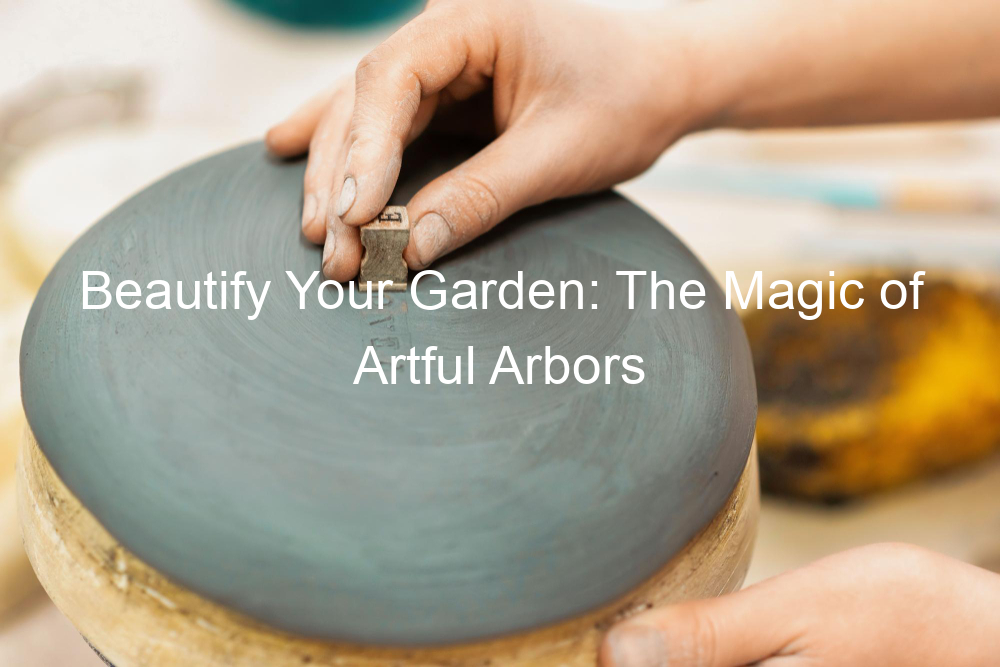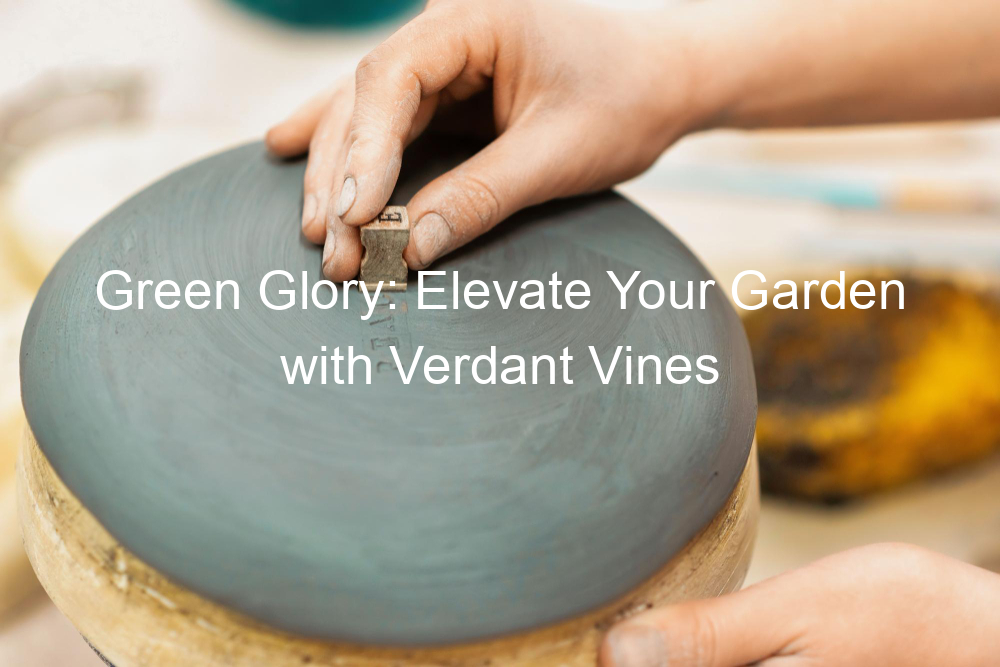Introduction to Indoor Evergreen Care
Indoor evergreens are a beautiful addition to any home, bringing a touch of nature indoors. However, they require specific care to stay healthy and vibrant. This section will introduce you to the importance of indoor evergreen care and help you understand the art of caring for these plants.
-
- Importance of Indoor Evergreen Care
These like their outdoor counterparts, are known for their ability to stay green all year round. However, maintaining their lush green appearance requires proper care. Without it, the plants may lose their vibrant color, become susceptible to diseases, and may even die. Therefore, understanding and implementing proper indoor evergreen care is crucial to keep your plants healthy and beautiful.
-
- Understanding the Art of Caring for Evergreens
Caring for indoor evergreens is an art that involves understanding the specific needs of these plants. This includes knowing the right amount of sunlight they need, the ideal temperature and humidity levels, and the correct watering schedule. It also involves recognizing signs of distress in your plants and knowing how to address them. By mastering this art, you can ensure your indoor evergreens thrive and continue to beautify your home.
As we dig deeper into this topic, we will explore different types of indoor evergreens, their specific care requirements, and tips for maintaining their health and beauty. Whether you’re a seasoned plant parent or a beginner, this guide will provide valuable insights to help you succeed in your indoor evergreen care journey.
Understanding Evergreen Indoor Plants
Evergreen indoor plants are a wonderful addition to any home or office. They not only add a touch of nature and beauty but also help to purify the air. Understanding these plants can help you choose the right ones for your space and care for them effectively.
Types of Evergreen Indoor Plants
There are two main types of evergreen indoor plants: evergreen houseplants and indoor evergreen trees. Let’s explore each of these in detail.
-
- Evergreen Houseplants
Evergreen houseplants are typically smaller than indoor trees and are perfect for adding a splash of green to your desk, windowsill, or table. Some popular evergreen houseplants include the Snake Plant, known for its tall, upright leaves, and the ZZ Plant, which is loved for its hardiness and ability to thrive in low light conditions. These plants are not only beautiful but also have the ability to purify the air, making them a great choice for any indoor space.
-
- Indoor Evergreen Trees
Indoor evergreen trees are larger and can make a dramatic statement in a room. They require more space than houseplants but can transform a space with their lush foliage. Some popular indoor evergreen trees include the Fiddle Leaf Fig, with its large, glossy leaves, and the Norfolk Island Pine, which can bring a touch of the forest into your home. These trees require a bit more care than houseplants, including regular watering and access to plenty of light, but their beauty and presence are well worth the effort.
To sum up, whether you prefer the compact size of evergreen houseplants or the grandeur of indoor evergreen trees, there’s an evergreen indoor plant to suit your needs. Understanding these plants and their needs can help you create a green oasis in your home or office.
Choosing the Right Evergreen Indoor Plant
Choosing the right evergreen indoor plant is crucial for the plant’s health and your home’s aesthetics. Two key factors to consider are the plant’s space and light requirements and its maintenance needs. Let’s delve into these factors.
-
- Considering Space and Light Requirements
Every plant has its unique space and light requirements. Some evergreen plants thrive in bright, indirect light, while others can survive in low-light conditions. For instance, the Snake Plant, a popular evergreen indoor plant, can grow in both bright and low-light environments.
Space is another crucial factor. Some evergreen plants, like the Dwarf Umbrella Tree, can grow up to 5 feet tall, requiring ample space. On the other hand, plants like the ZZ Plant have a compact growth habit, making them perfect for small spaces.
Before choosing a plant, consider the available space in your home and the amount of natural light it receives. This will help you select a plant that will thrive in your specific conditions.
-
- Understanding Plant Maintenance Needs
Every plant has different maintenance needs. Some evergreen plants require frequent watering and feeding, while others can survive with minimal care. For instance, the Peace Lily needs to be watered once a week and prefers high humidity levels. On the contrary, the Cast Iron Plant is drought-tolerant and can survive with less frequent watering.
Understanding a plant’s maintenance needs is essential to keep it healthy and vibrant. It’s also crucial to consider your lifestyle. If you’re often away from home or have a busy schedule, opt for low-maintenance plants that can thrive with less attention.
To sum up, choosing the right evergreen indoor plant involves considering the plant’s space and light requirements and understanding its maintenance needs. By taking these factors into account, you can ensure that your plant thrives and adds beauty to your home for years to come.
Indoor Evergreen Maintenance
Keeping your indoor evergreen plants healthy and vibrant requires some special attention. One of the most crucial aspects of indoor evergreen maintenance is watering. Let’s dig deeper into the specifics.
Watering Your Evergreen Indoor Plants
Watering might seem like a simple task, but it’s more than just pouring water into your plant’s pot. It’s about understanding your plant’s unique water requirements and using the right watering techniques.
-
- Understanding Water Requirements
Evergreen plants are unique in their water needs. Unlike other indoor plants, evergreens prefer their soil to be consistently moist, but not waterlogged. Overwatering can lead to root rot, a common plant disease. On the other hand, underwatering can cause the plant to dry out and lose its vibrant green color. It’s a delicate balance that requires regular monitoring.
-
- Watering Techniques for Evergreen Care
When it comes to watering your evergreen, technique matters. Here are a few tips:
-
- Use a watering can with a long spout to reach the soil without wetting the leaves.
- Water the plant slowly, allowing the water to seep into the soil and reach the roots.
- Wait until the top inch of soil is dry before watering again. This can help prevent overwatering.
- During winter, reduce watering as the plant’s growth slows down.
Keep in mind, every plant is unique, and so are its water requirements. The key is to observe your plant and adjust your watering routine as needed. With proper care and attention, your indoor evergreen can thrive and bring a touch of nature’s beauty into your home.
Feeding Your Evergreen Indoor Plants
Just like humans, plants need food to grow and thrive. For your indoor evergreen plants, this food comes in the form of nutrients absorbed from the soil. Let’s dig into the specifics of feeding your evergreen indoor plants.
- Understanding Nutrient Requirements
Evergreen plants require a balance of several nutrients to grow healthily. These include:
| Nutrient | Role |
|---|---|
| Nitrogen (N) | Boosts leaf growth and gives plants their green color. |
| Phosphorus (P) | Helps in root development and flowering. |
| Potassium (K) | Strengthens plants and helps them resist diseases. |
| Calcium (Ca) | Strengthens plant cell walls. |
| Magnesium (Mg) | Essential for photosynthesis. |
These nutrients are vital for your evergreen plants to grow and stay healthy. Still, the exact amounts needed can vary depending on the specific type of evergreen plant you have.
- Choosing the Right Fertilizer
Now that you understand the nutrient requirements of your evergreen plants, the next step is choosing the right fertilizer. Fertilizers are a great way to supplement your plants’ nutrient intake, especially when the nutrients in the soil are depleted.
When choosing a fertilizer, consider the following:
- Nutrient Ratio: Look for a balanced N-P-K ratio, such as 10-10-10 or 14-14-14. This ensures your plant gets a good mix of the three primary nutrients.
- Additional Nutrients: Some fertilizers also contain secondary nutrients like calcium and magnesium, which can be beneficial for your evergreens.
- Slow-Release: Slow-release fertilizers provide nutrients over a longer period, reducing the risk of over-fertilization.
Keep in mind, while fertilizers are beneficial, they should be used sparingly. Over-fertilization can harm your plants more than it helps. Always follow the instructions on the fertilizer package to ensure you’re using the right amount.
Feeding your evergreen indoor plants might seem complicated, but with a little knowledge and the right tools, you can ensure your plants get the nutrients they need to thrive.
Caring for Indoor Trees
Indoor trees, especially evergreens, can bring a touch of nature into your home. Nevertheless, they require special care to stay healthy and beautiful. One of the most important aspects of indoor tree care is pruning and shaping.
Pruning and Shaping Your Indoor Evergreen Trees
Pruning and shaping are essential for maintaining the health and aesthetics of your indoor evergreen trees. Let’s explore when and how to prune, as well as some shaping techniques for aesthetic appeal.
-
When and How to Prune
Pruning should be done in the late winter or early spring, when the tree is in its dormant period. This helps to minimize stress and allows the tree to recover quickly. To prune, use a sharp, clean pair of pruning shears and make cuts at a 45-degree angle. Always remove dead or diseased branches first, followed by any branches that are crossing or rubbing against each other.
-
Shaping Techniques for Aesthetic Appeal
Shaping your indoor evergreen tree can enhance its natural beauty. Start by deciding on the shape you want – this could be a traditional cone shape, a more rounded shape, or even a unique, abstract shape. Once you’ve decided, gradually trim the tree to achieve this shape, taking care not to remove too much foliage at once. Remember, it’s easier to trim more later than to replace branches you’ve cut off!
In summary, caring for indoor trees involves more than just watering and feeding. Pruning and shaping are crucial tasks that can greatly enhance the health and appearance of your indoor evergreen trees. With a little time and effort, you can enjoy the beauty of nature in your home all year round.
Dealing with Pests and Diseases
As a part of caring for indoor evergreen trees, it’s crucial to understand how to deal with pests and diseases that may affect the health of your plants. Let’s delve into the common pests and diseases that indoor evergreens often encounter and discuss some effective treatment and prevention methods.
-
- Common Pests and Diseases in Indoor Evergreen Trees
Indoor evergreen trees can be affected by a variety of pests and diseases. Here are some of the most common ones:
| Pest/Disease | Signs |
|---|---|
| Spider Mites | Yellow spots on leaves, web-like structures on the plant |
| Scale Insects | Sticky residue on leaves, bumpy patches on stems or leaves |
| Root Rot | Wilting leaves, blackened roots, a musty smell |
| Powdery Mildew | White, powdery substance on leaves and stems |
-
- Treatment and Prevention Methods
Now that we know what to look for, let’s discuss how to treat and prevent these common issues.
-
- Spider Mites: Regularly misting your evergreen can deter these pests. If an infestation occurs, a mild insecticidal soap can be used.
- Scale Insects: These can be removed manually or treated with a horticultural oil spray.
- Root Rot: Avoid overwatering your tree and ensure it has proper drainage. If root rot is detected, remove the affected roots and repot the tree.
- Powdery Mildew: Increase air circulation around your tree and consider a fungicide if the problem persists.
Keep in mind, prevention is always better than cure. Regularly inspect your indoor evergreen trees for signs of pests or diseases, and take action at the first sign of trouble. With the right care and attention, your indoor evergreens can thrive, providing you with a lush, green indoor oasis.
Evergreen Care Tips
Evergreen plants are a wonderful addition to any indoor space. They add a touch of nature and a splash of color that can brighten up any room. However, they require a certain level of care to ensure they remain healthy and vibrant. Here are some tips on how to care for your indoor evergreen plants.
Tips for Evergreen Indoor Plant Care
Indoor evergreen plants are not as demanding as their outdoor counterparts, but they still need some attention to thrive. Here are two key areas to focus on:
-
- Creating an Ideal Environment
Evergreen plants prefer a cool, humid environment. Try to keep the temperature around 65-75 degrees Fahrenheit during the day and slightly cooler at night. Humidity is also important. If your home is dry, consider using a humidifier or placing a tray of water near your plant to increase humidity levels. Also, ensure your plant gets plenty of indirect sunlight.
-
- Regular Maintenance Schedule
Regular maintenance is crucial for the health of your evergreen plant. This includes watering, fertilizing, and pruning. Water your plant when the top inch of soil is dry. Overwatering can lead to root rot, a common problem with evergreens. Fertilize your plant every 2-4 weeks during the growing season with a balanced houseplant fertilizer. Prune your plant regularly to maintain its shape and remove any dead or diseased branches.
By following these tips, you can ensure your indoor evergreen plant stays healthy and beautiful. Remember, every plant is unique and may require slightly different care, so always pay attention to the specific needs of your plant.
Common Mistakes in Evergreen Care
When it comes to the care of evergreen plants, there are a few common mistakes that many people make. These mistakes can lead to unhealthy plants and can even cause them to die. Let’s take a closer look at these common mistakes and how to avoid them.
-
- Overwatering and Underwatering
Watering is a crucial part of evergreen care, but it can be easy to get it wrong. Both overwatering and underwatering can harm your plants.
Overwatering can lead to root rot, a condition that can kill your plant. On the other hand, underwatering can cause your plant to dry out and die. The key is to find a balance. Your evergreen plant needs enough water to keep its soil moist, but not so much that it becomes waterlogged.
As a rule of thumb, it’s better to underwater than overwater. If you’re unsure, touch the soil. If it feels dry an inch below the surface, it’s time to water your plant.
-
- Incorrect Light Conditions
Another common mistake is not providing the right light conditions for your evergreen plant. These plants typically need bright, indirect light. Too much direct sunlight can scorch their leaves, while too little light can stunt their growth.
Place your evergreen plant near a window where it can get plenty of indirect sunlight. If you notice the leaves turning yellow or brown, it might be getting too much light. On the other hand, if the plant’s growth seems slow or the leaves are pale, it might not be getting enough light.
By avoiding these common mistakes, you can keep your evergreen plants healthy and thriving. Remember, the key to good plant care is balance. With the right amount of water and light, your evergreen plants can be a beautiful addition to your home.
Indoor Evergreen Gardening
Indoor evergreen gardening is a rewarding hobby that brings a touch of nature into your home. With the right planning and plant selection, you can create a lush, green oasis that thrives all year round.
Creating an Indoor Evergreen Garden
Creating an indoor evergreen garden involves two main steps: planning your garden and choosing the right plants. Let’s explore these steps in detail.
-
- Planning Your Indoor Garden
Before you start buying plants, it’s important to plan your indoor garden. Consider the space you have available, the amount of light it receives, and the temperature and humidity levels. These factors will influence the types of plants you can grow and their placement.
For instance, if you have a sunny windowsill, you could grow a variety of evergreen herbs like rosemary and thyme. If your space is more shaded, consider plants like ferns that thrive in lower light conditions.
Bear in mind, your indoor garden should be a place of relaxation and enjoyment. So, plan it in a way that suits your lifestyle and aesthetic preferences.
-
- Choosing the Right Plants for Your Garden
Choosing the right plants is crucial for a successful indoor evergreen garden. You want to select plants that will thrive in your home’s conditions and that are easy to care for.
Some popular indoor evergreen plants include the snake plant, ZZ plant, and pothos. These plants are known for their hardiness and low-maintenance needs. They also have the added benefit of purifying the air in your home.
When choosing plants, consider their growth habits. Some plants, like the snake plant, grow upright and can be used to add height to your garden. Others, like pothos, are trailing plants that look great in hanging baskets or on shelves.
By carefully planning your garden and choosing the right plants, you can create a beautiful indoor evergreen garden that brings joy and tranquility to your home.
Maintaining Your Indoor Evergreen Garden
Keeping your indoor evergreen garden healthy and vibrant requires consistent care and attention. Here, we will discuss the regular maintenance tasks you should perform and how to deal with common challenges in indoor gardening.
-
- Regular Maintenance Tasks
Regular maintenance is the key to a thriving indoor evergreen garden. Here are some tasks you should do regularly:
-
-
- Watering: Evergreen plants typically need a moderate amount of water. However, the exact amount depends on the type of plant and its size. Always check the soil before watering. If it’s dry to the touch, it’s time to water.
- Pruning: Regular pruning helps maintain the shape of your evergreens and promotes healthy growth. Remove dead or diseased branches as soon as you notice them.
- Fertilizing: Evergreens generally need a balanced fertilizer. Apply it during the growing season, usually in spring and summer.
- Checking for pests: Regularly inspect your plants for signs of pests. If you notice any, take action immediately to prevent them from spreading.
- Dealing with Challenges in Indoor Gardening
-
Indoor gardening can come with its own set of challenges. Here are some common issues and how to deal with them:
-
- Insufficient light: Evergreens need plenty of light to thrive. If your plants aren’t getting enough natural light, consider using artificial grow lights.
- Overwatering: Overwatering is a common mistake in indoor gardening. It can lead to root rot and other diseases. Always check the soil before watering to ensure it’s not too wet.
- Pests: Pests can be a big problem in indoor gardens. Regularly inspect your plants for signs of pests and take action immediately if you find any.
- Temperature and humidity: Evergreens prefer a cooler, humid environment. Try to maintain a consistent temperature and humidity level in your home for the best results.
With consistent care and attention, your indoor evergreen garden can thrive. Remember, the key to successful indoor gardening is understanding the needs of your plants and providing the right conditions for them to grow.
Conclusion: Evergreen Elegance
As we wrap up our discussion on indoor evergreen care, it’s clear that these plants offer more than just a touch of nature to our living spaces. They embody a timeless elegance that’s both captivating and soothing. Let’s revisit some of the key points we’ve covered.
-
- Benefits of Indoor Evergreen Care
Indoor evergreens are not just aesthetically pleasing; they also offer numerous benefits. They purify the air by absorbing toxins and releasing oxygen, contributing to a healthier living environment. Additionally, caring for these plants can be a therapeutic activity, helping to reduce stress and promote a sense of well-being. With proper care, these plants can thrive indoors, providing you with a year-round touch of greenery.
-
- Enjoying the Everlasting Elegance of Evergreens
Evergreens are named for their ability to maintain their vibrant green color throughout the year. This enduring elegance makes them a favorite choice for indoor gardening. Whether you choose a small tabletop plant or a larger tree, evergreens can add a touch of sophistication to any room. Their resilience and minimal care requirements make them an excellent choice for both novice and experienced gardeners.
To sum up, indoor evergreens are a wonderful addition to any home or office. They bring a piece of the outdoors in, offering a sense of calm and tranquility while also purifying the air. With the right care, these plants can thrive, providing you with a constant source of natural beauty. So, why not start your indoor evergreen journey today and enjoy the everlasting elegance these plants offer?

